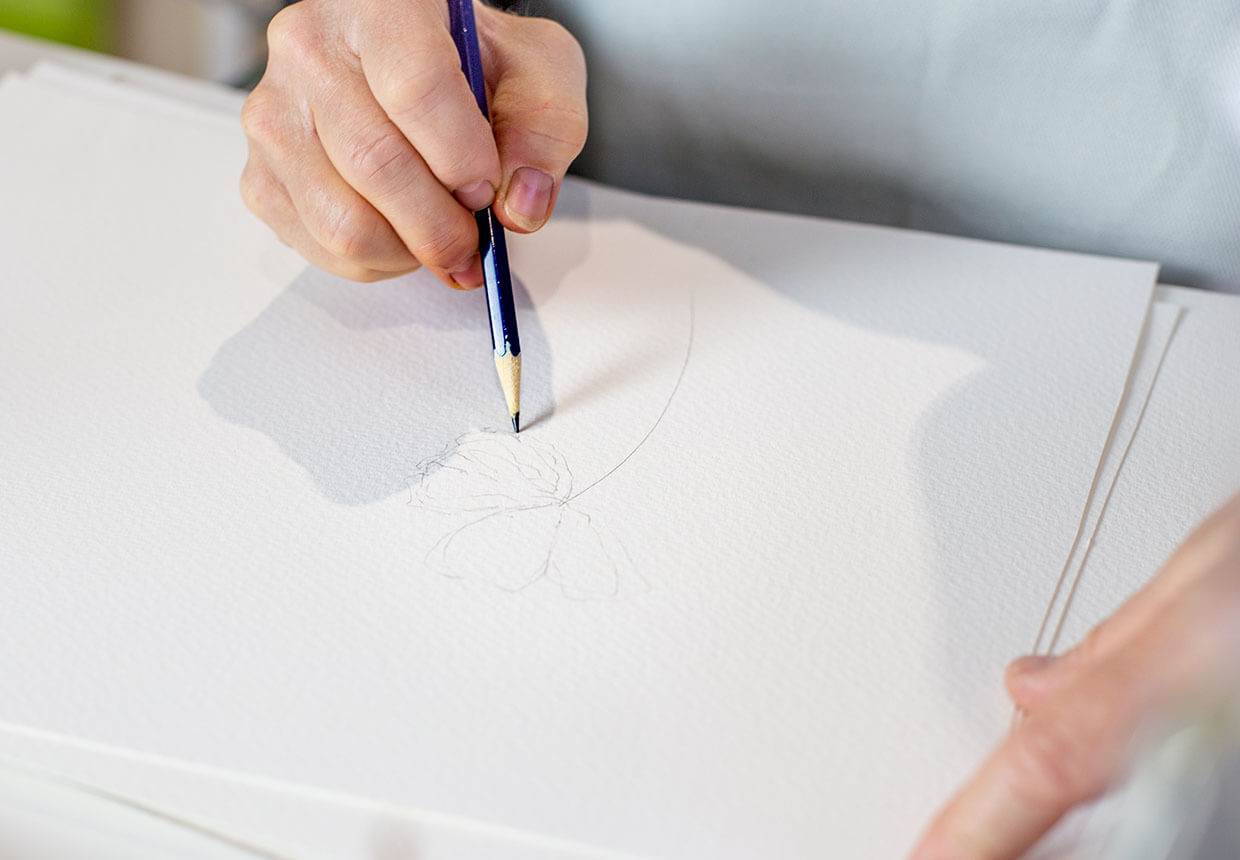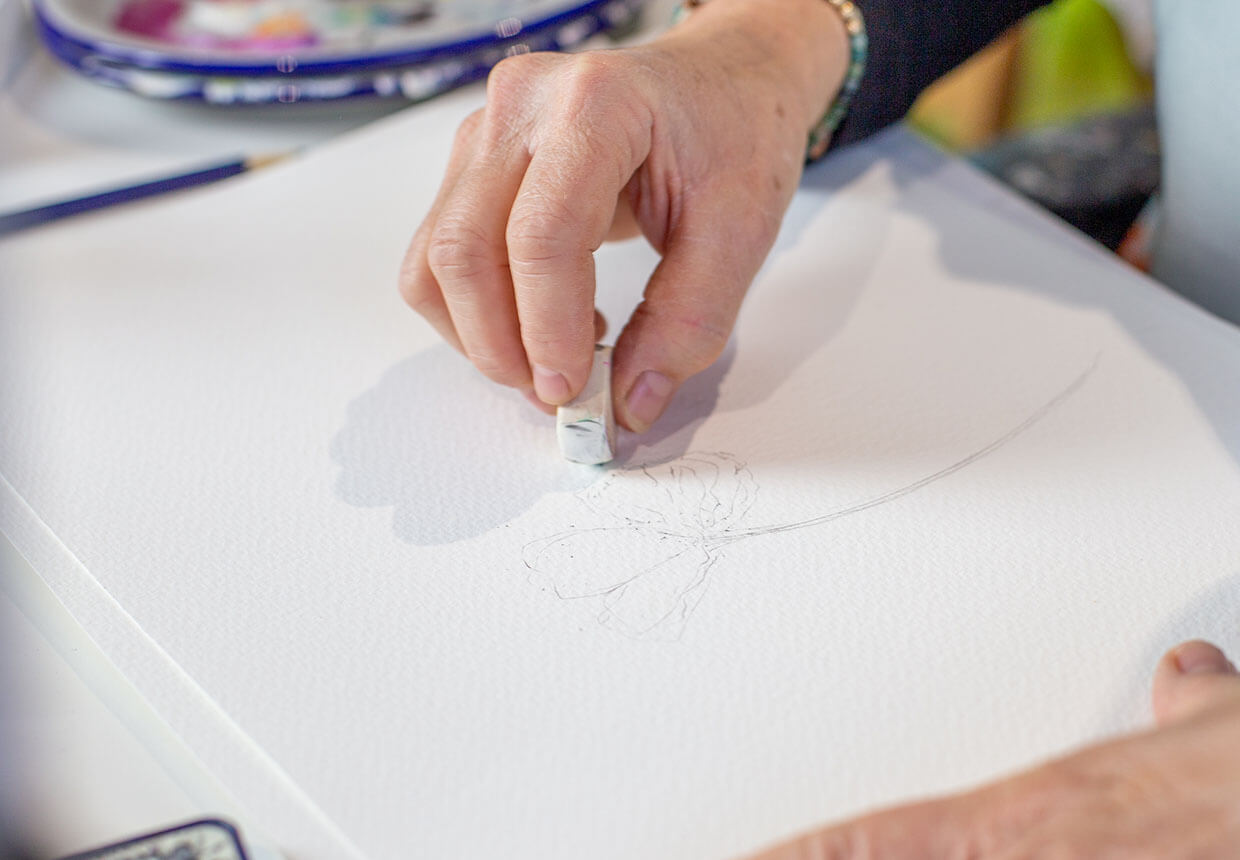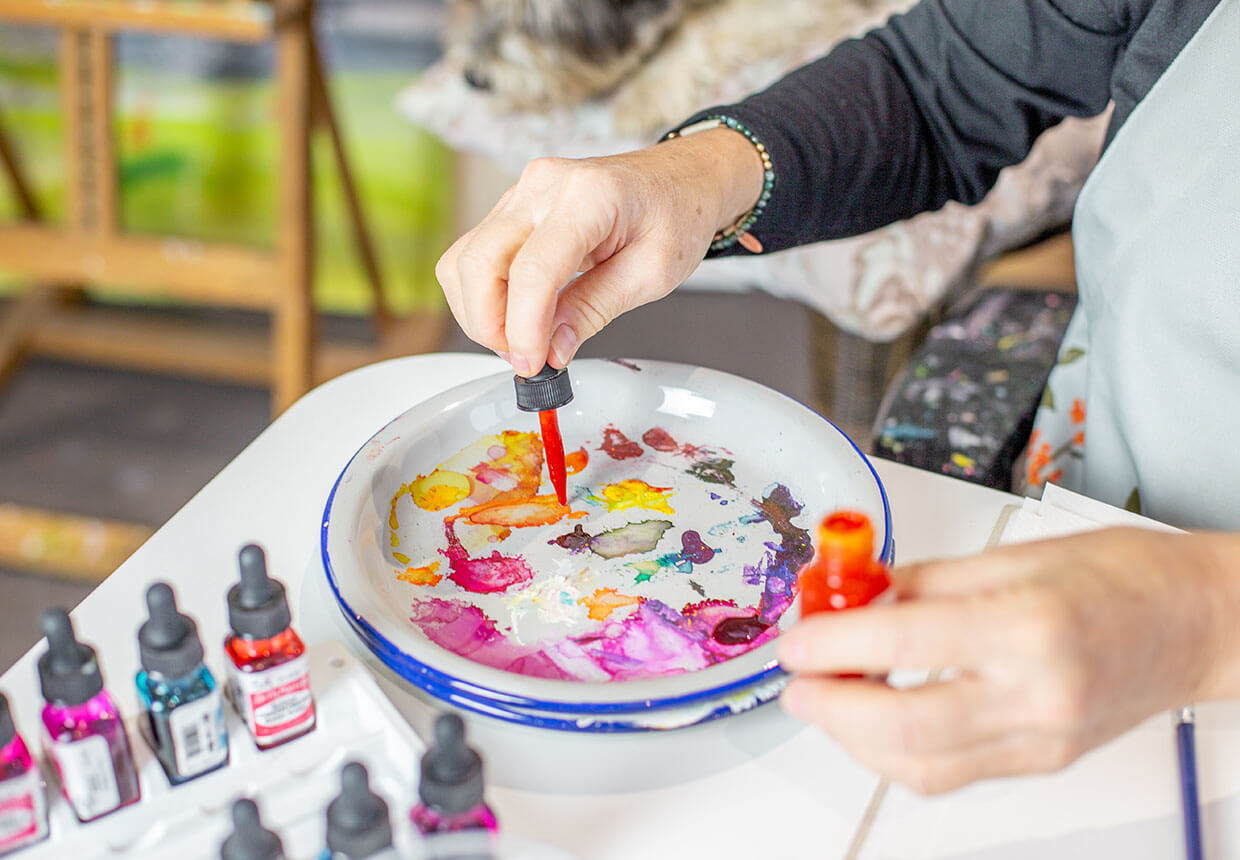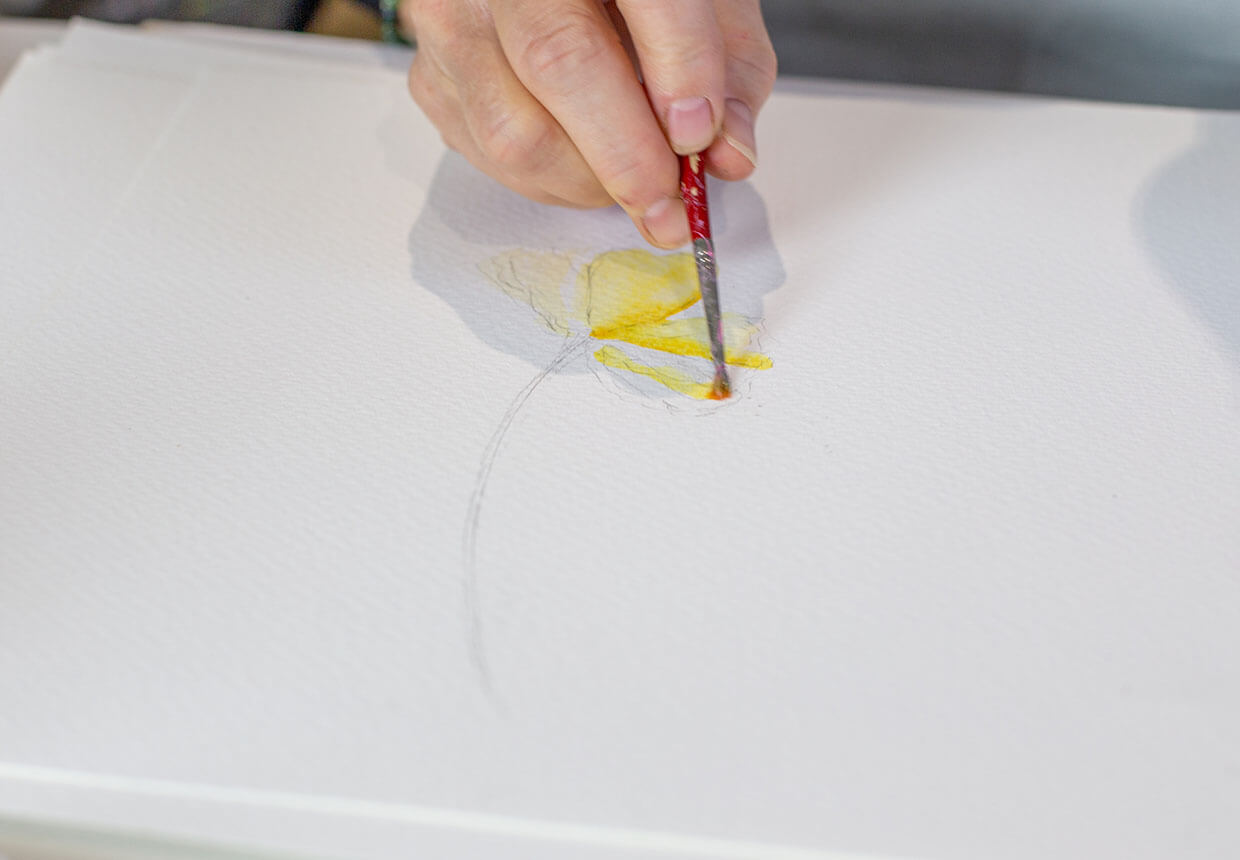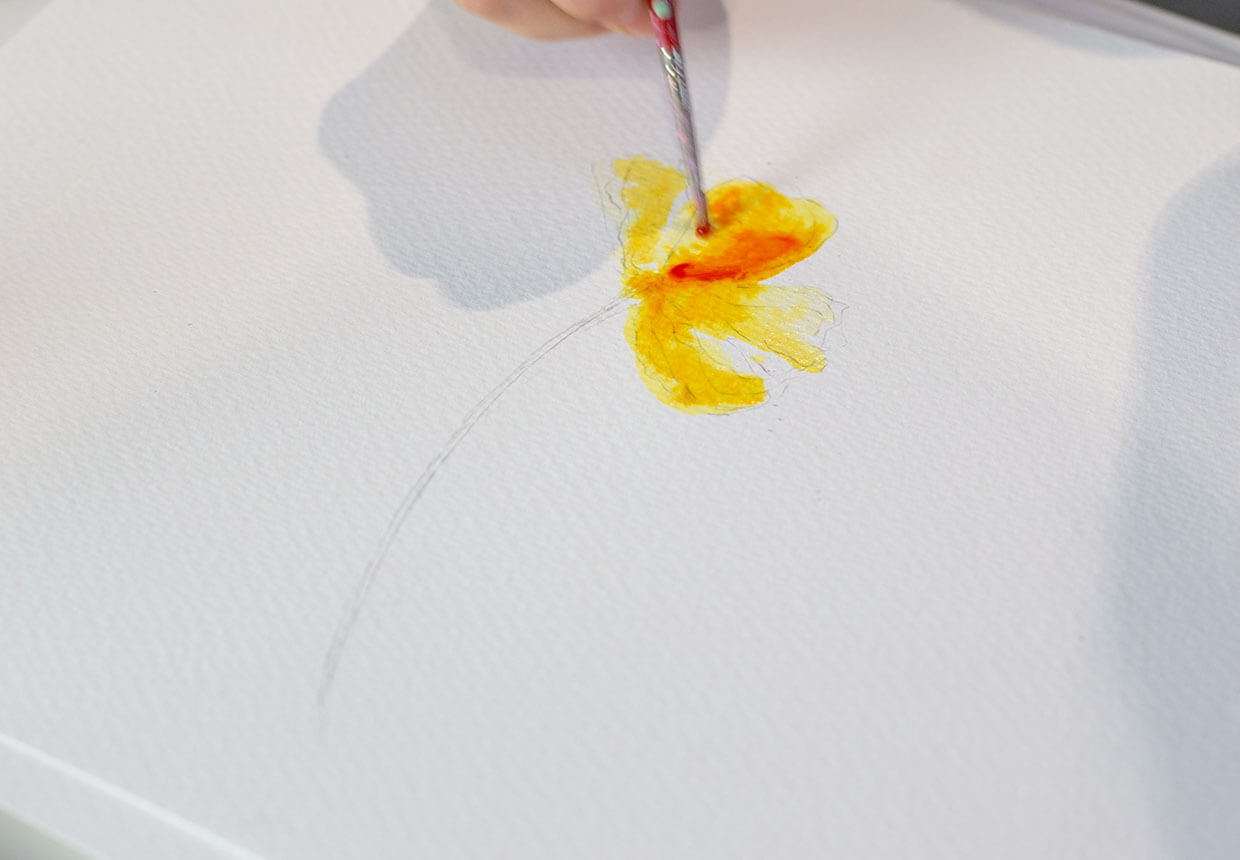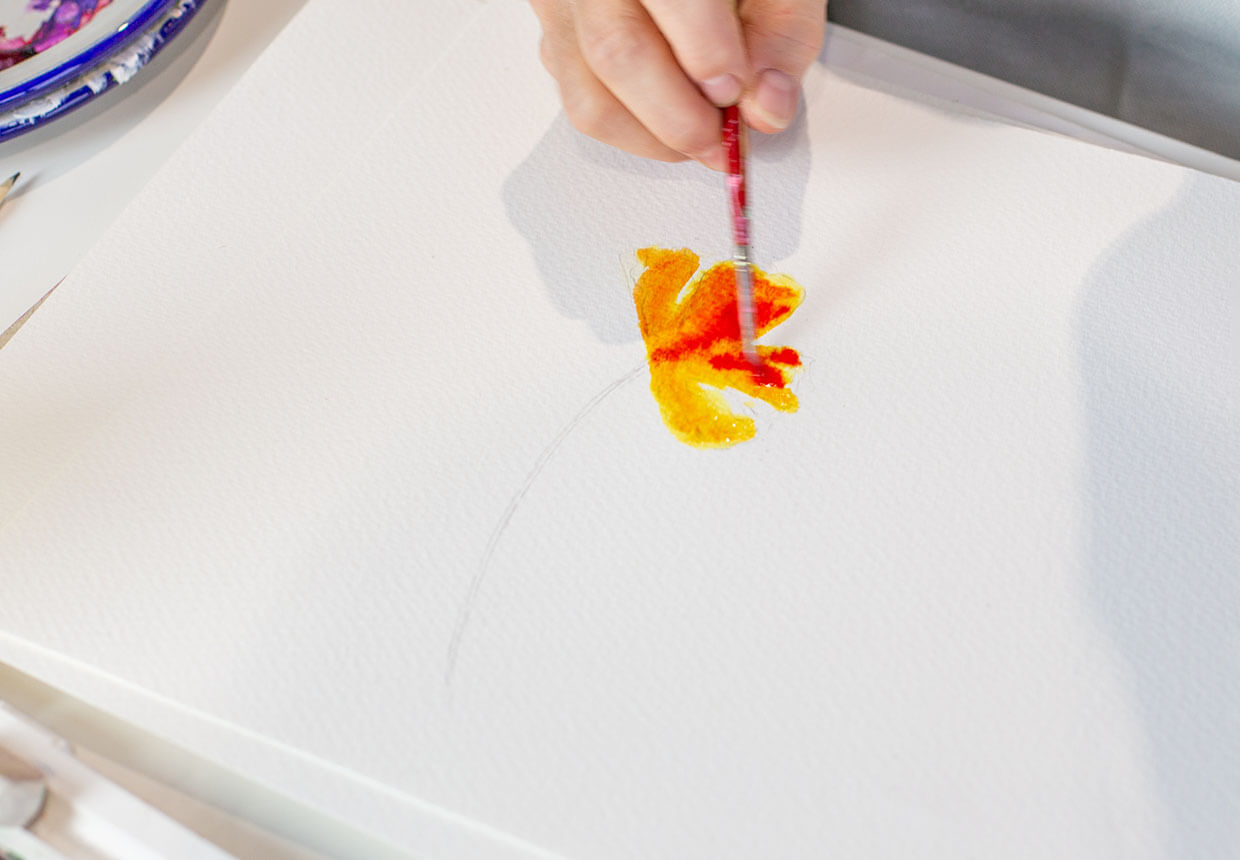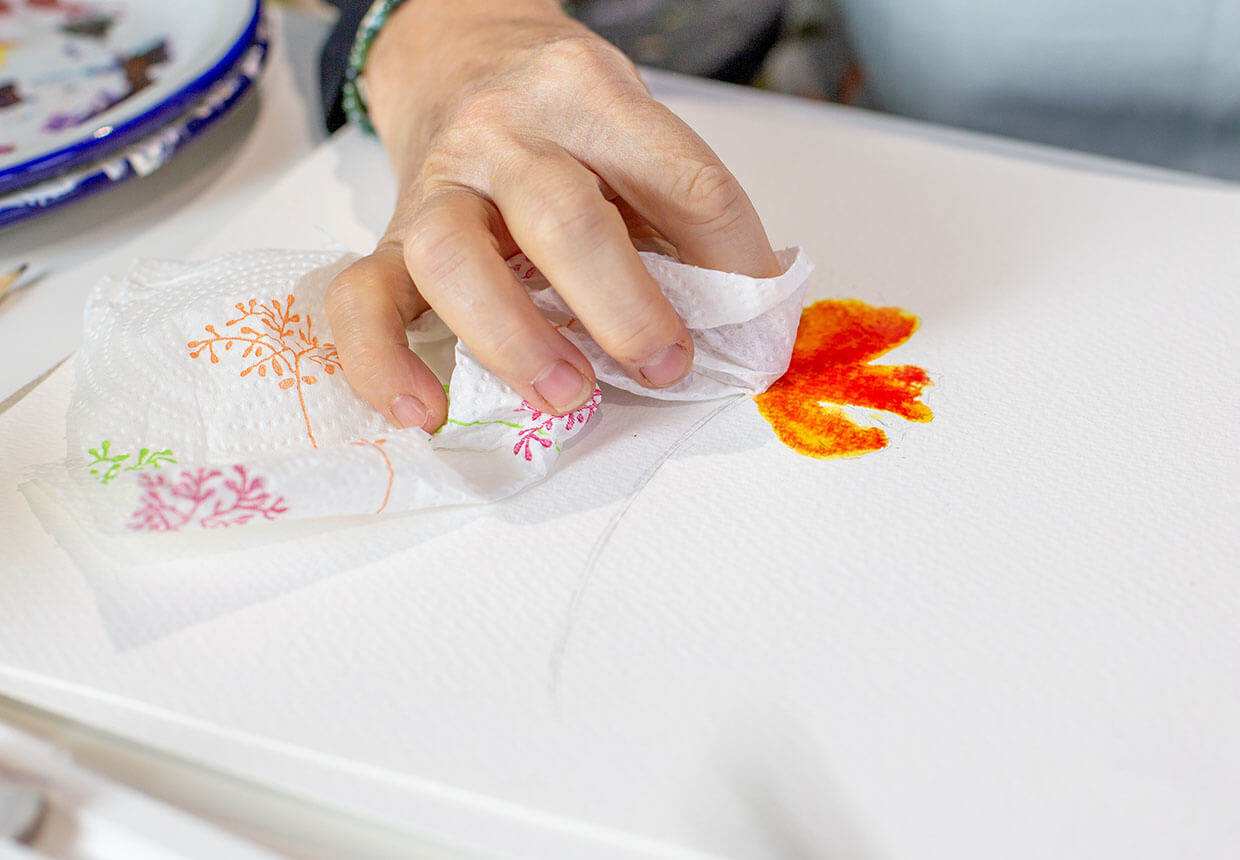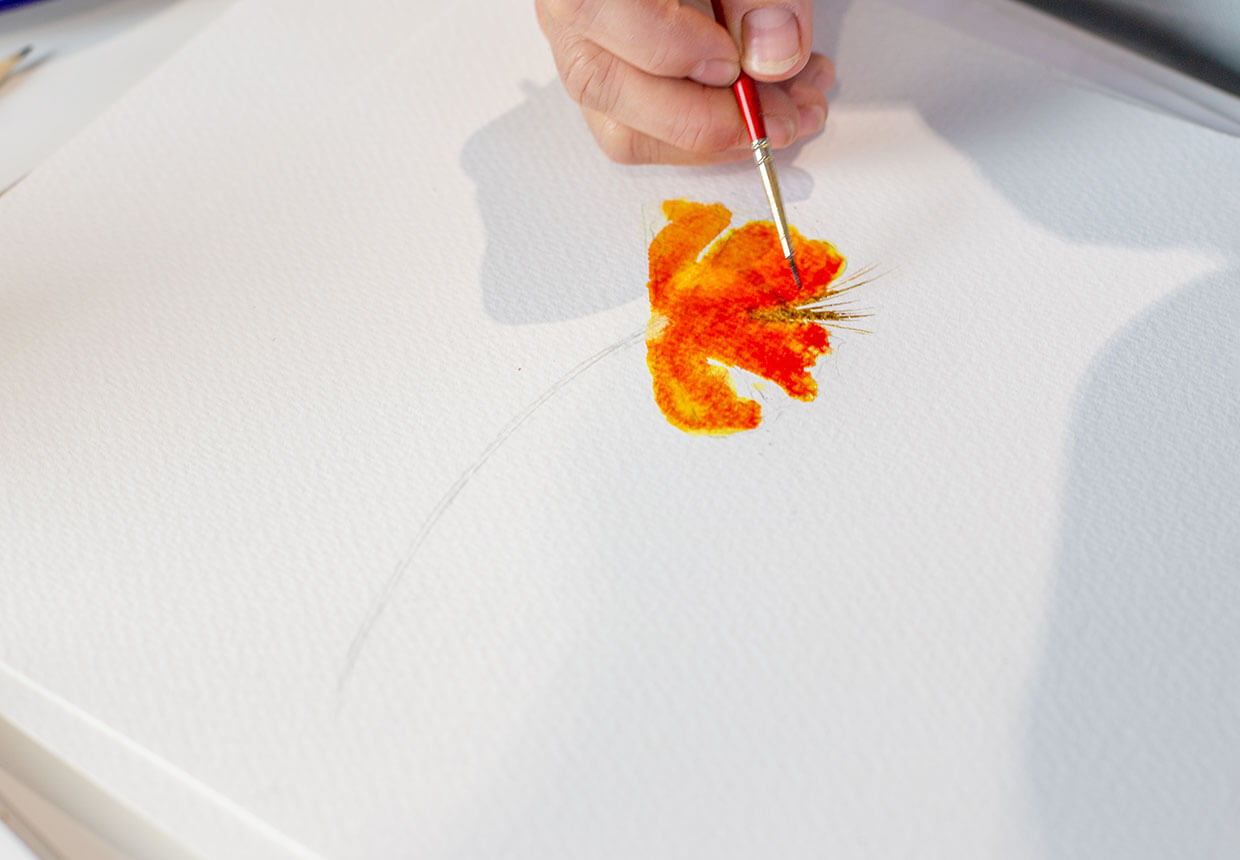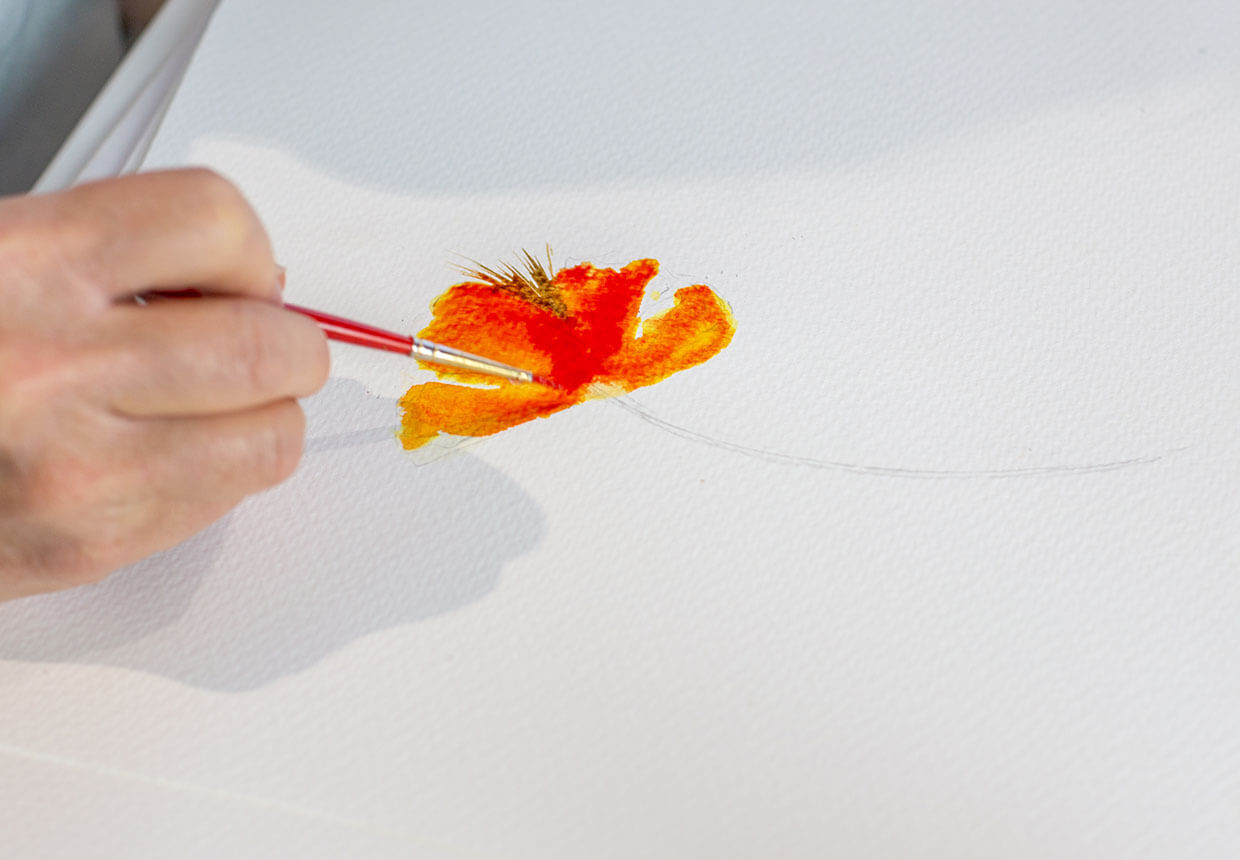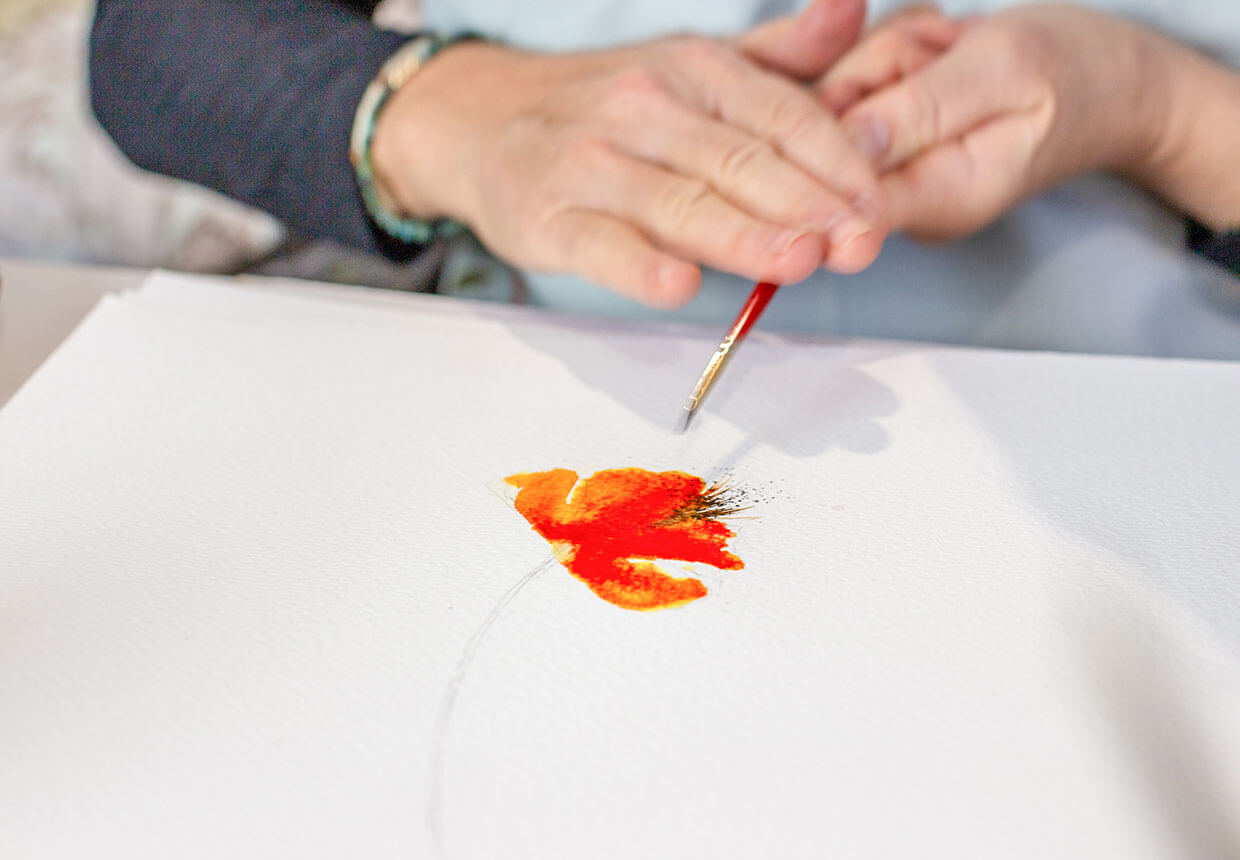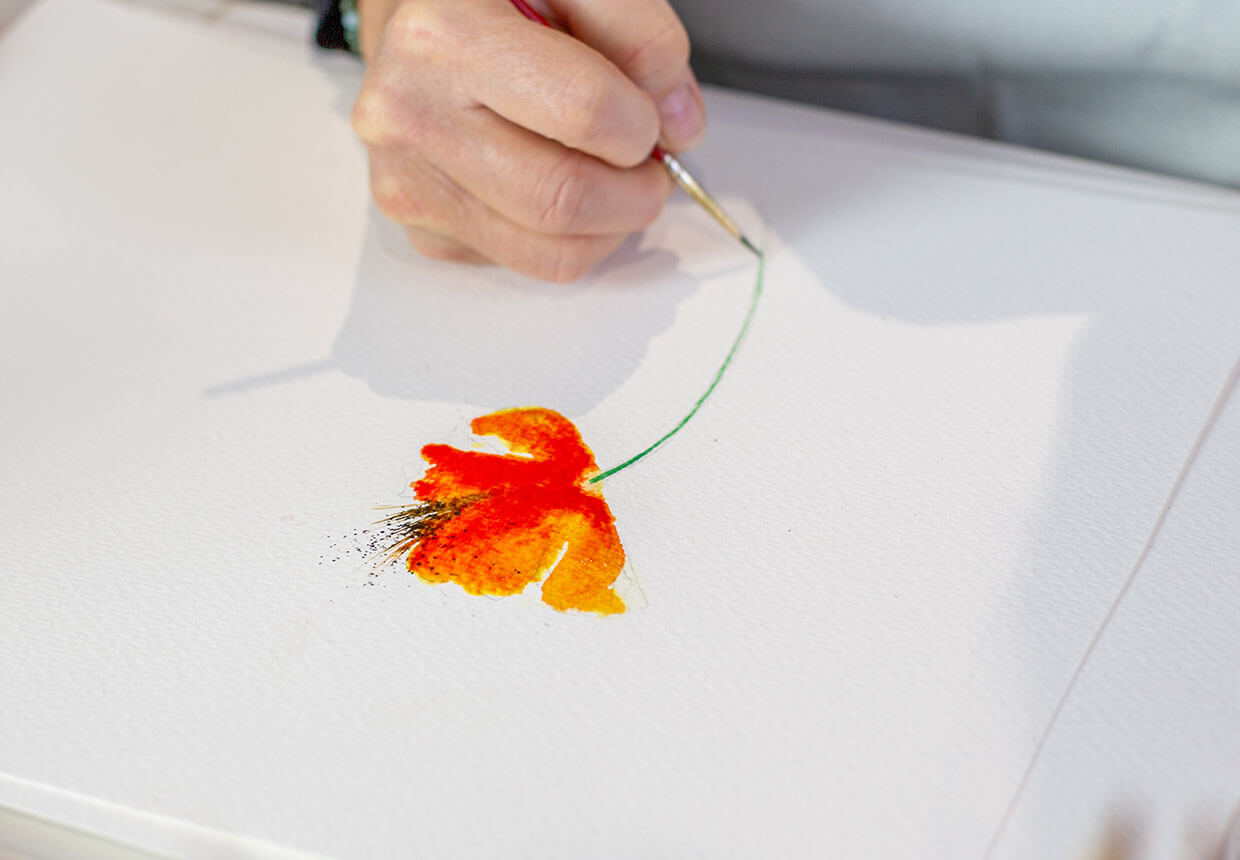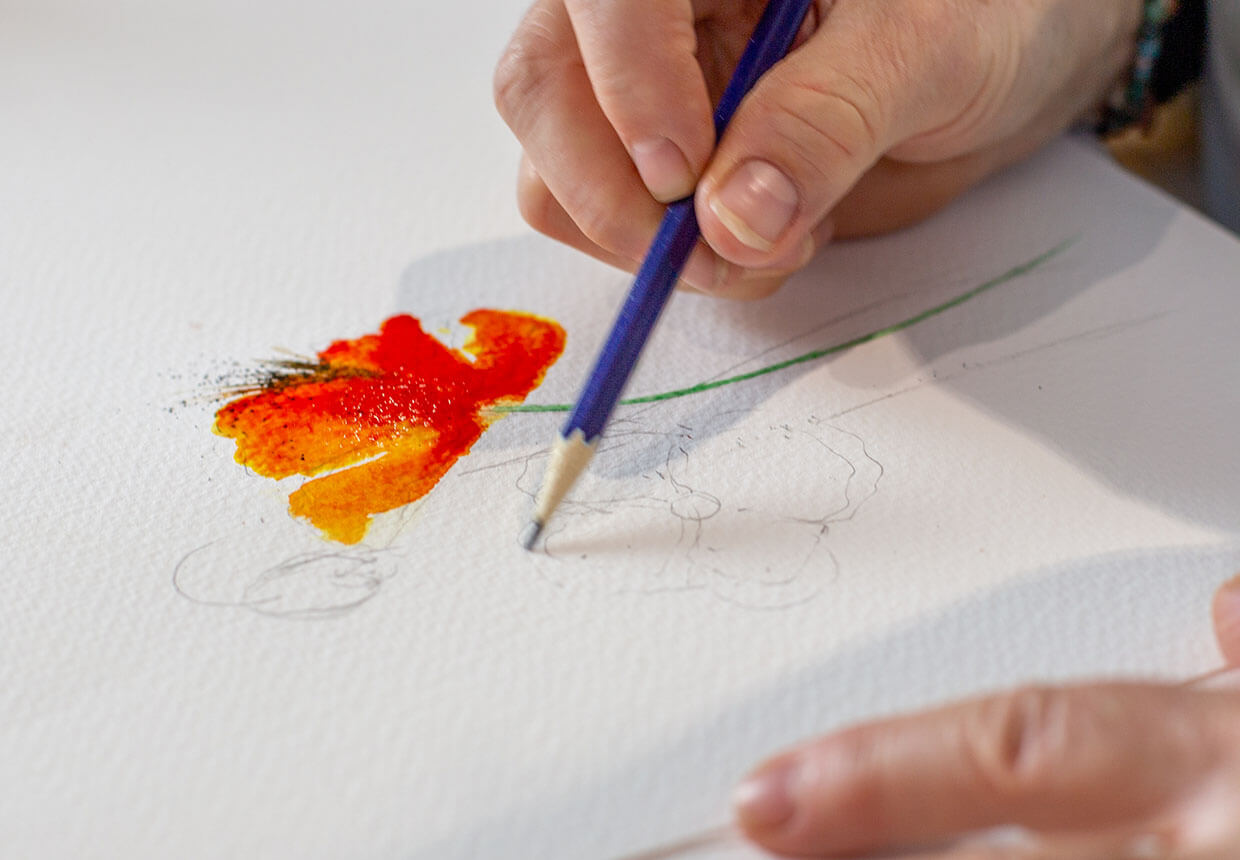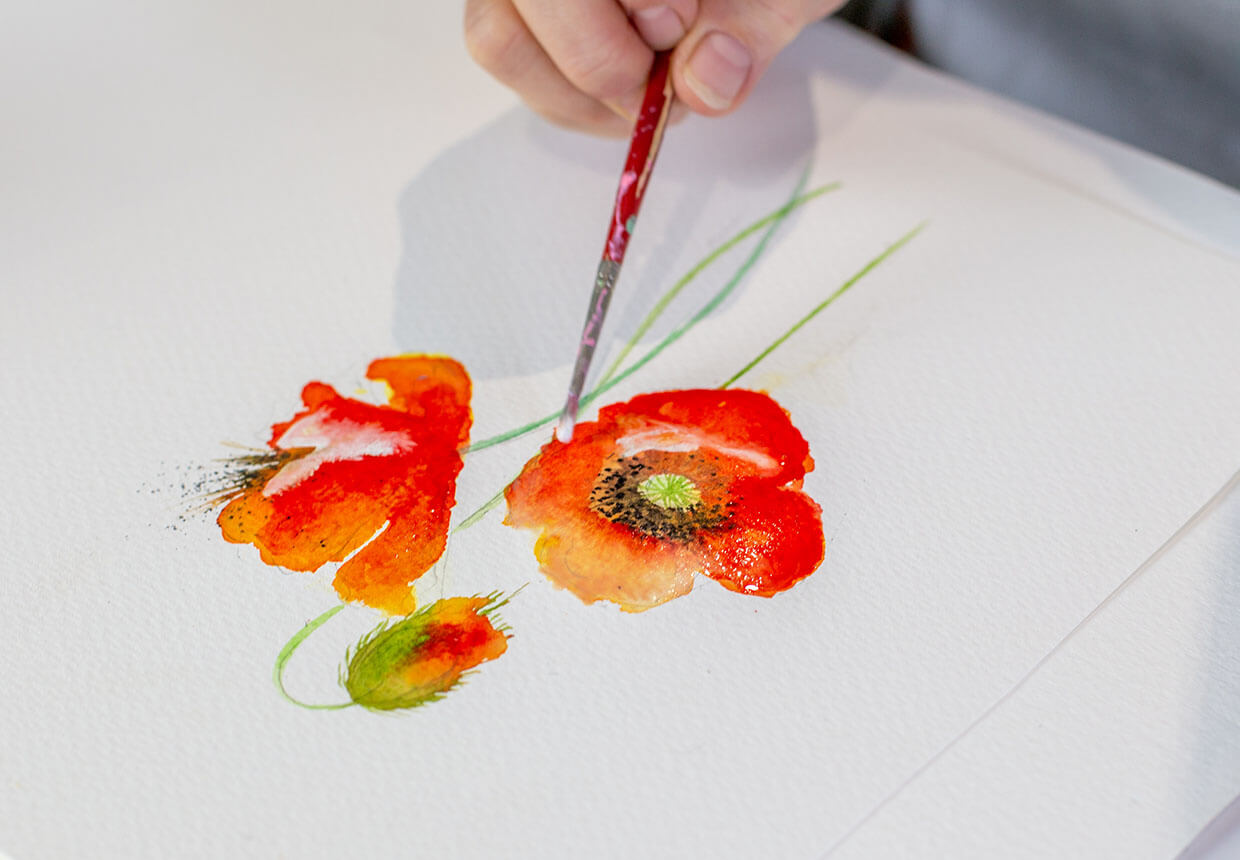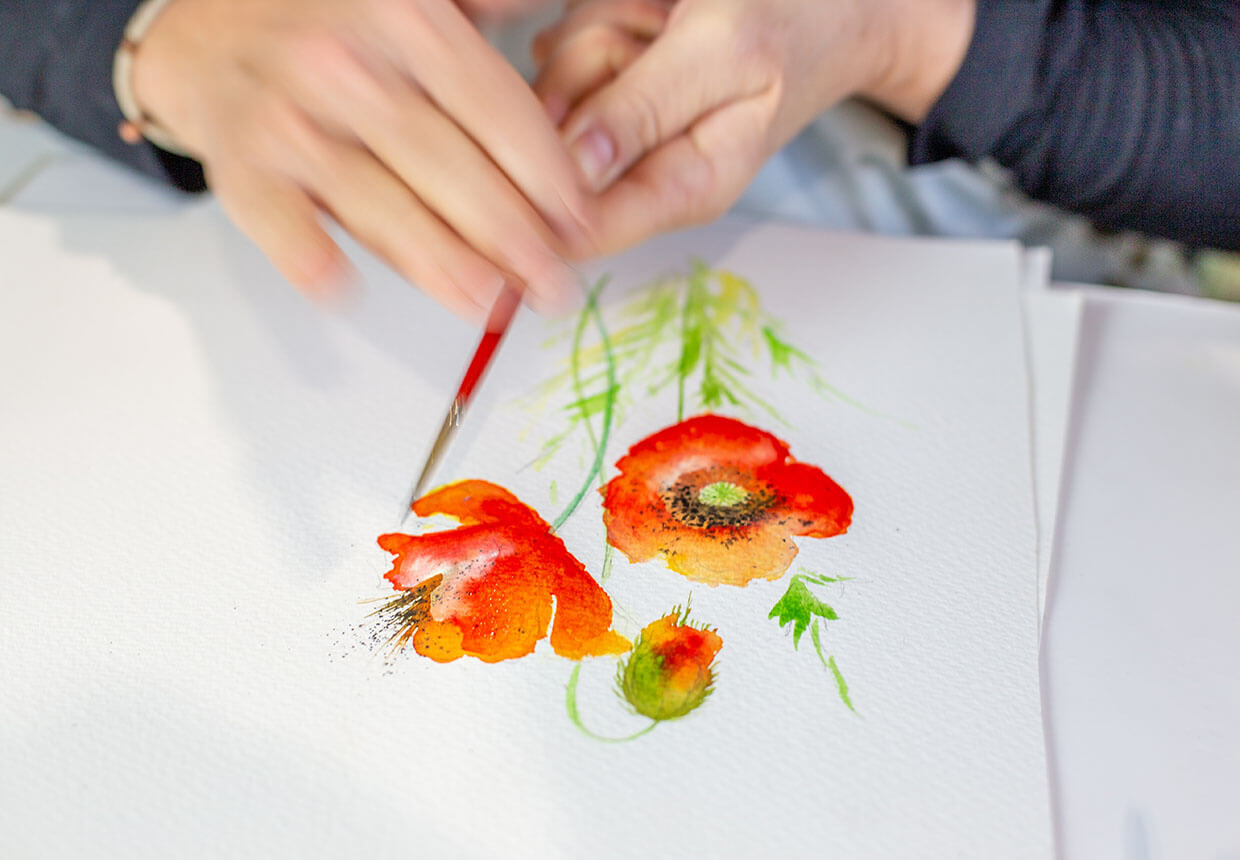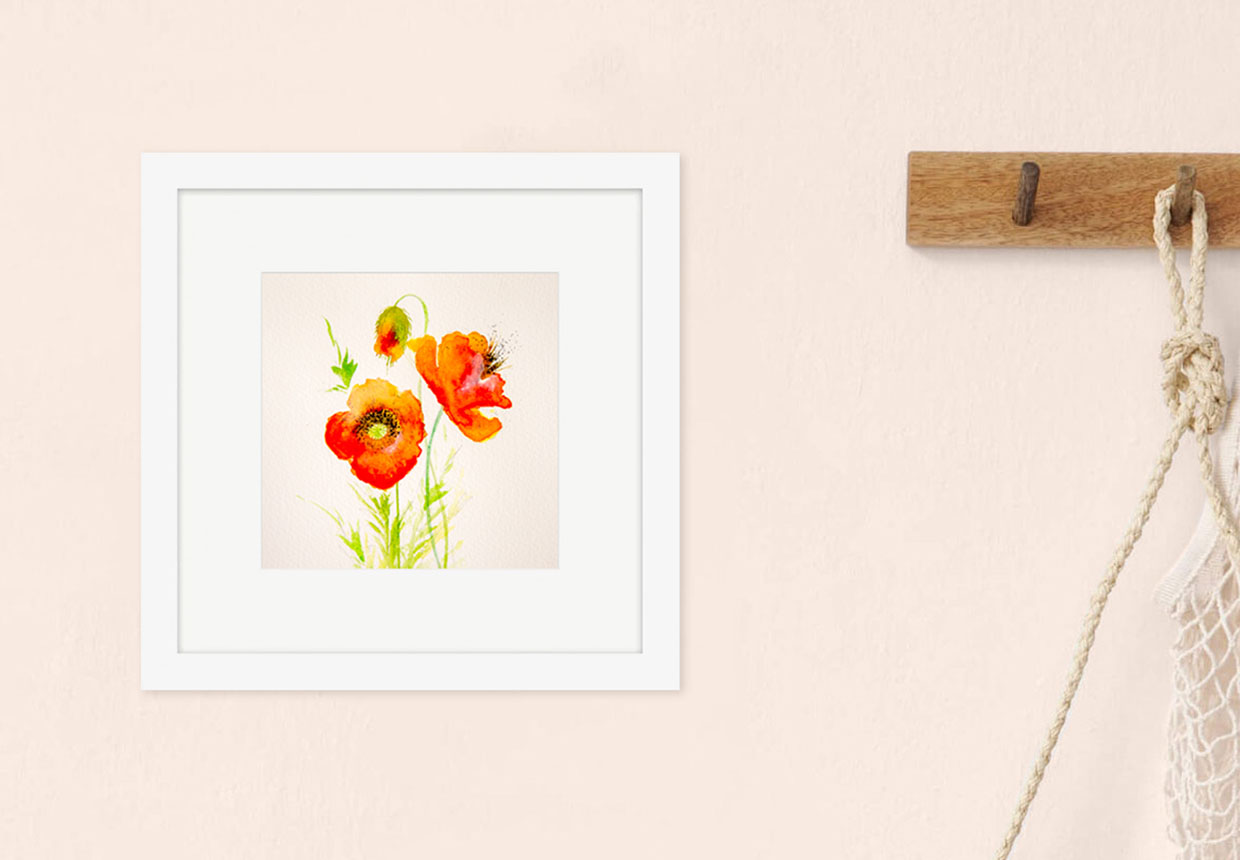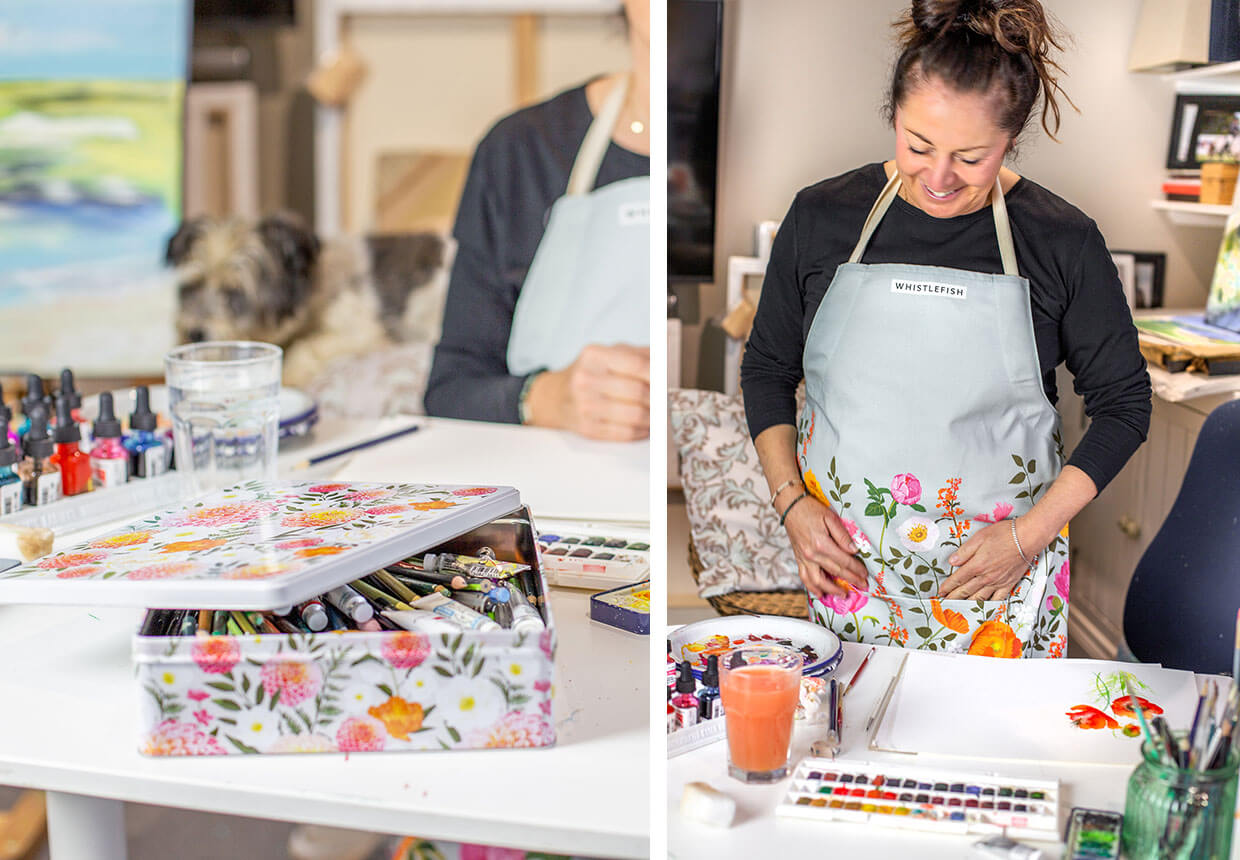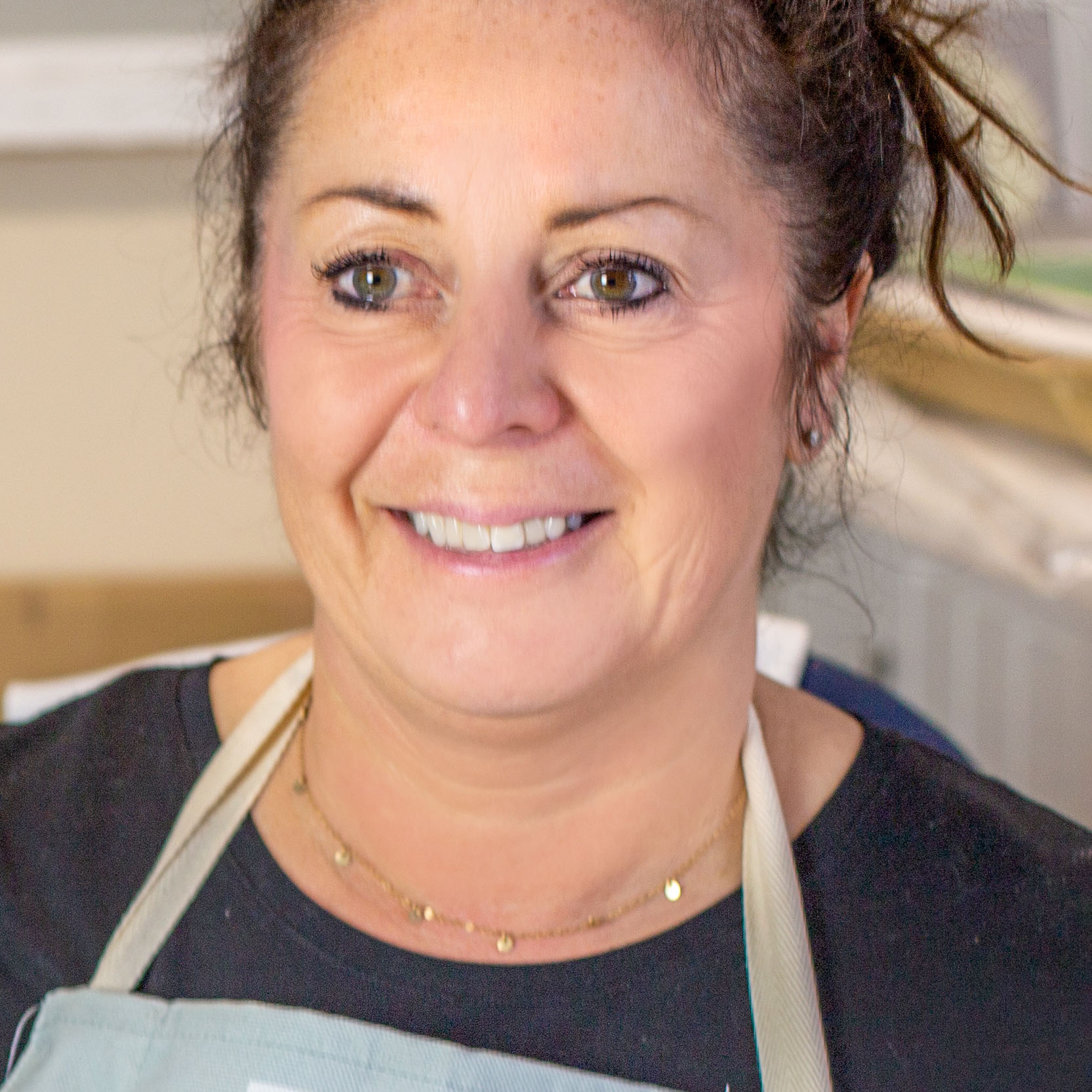Florals have been a signature of the Whistlefish identity for the past 26 years, our greeting cards and art are hugely inspired by the nature of Cornwall that surrounds us. We bring out new products almost every week and there’s always, always flowers – the perfect way to pick someone up when they’re feeling down, say congratulations or send birthday wishes.
It’s always a joy to sit down and paint flowers. With the large variety of species and colours available, each time you can study and produce something completely different that reflects the time of year or the mood you are feeling.
I like to paint bright blooms as it lifts me away from whatever doom and gloom may be going on in the world; it’s an escape and you’re left with a reminder of something beautiful.
There’s also so much flexibility when it comes to painting flowers. You can interpret them in your own way and you don’t have to be an expert in fine art.
Being loose with paint gives a natural look that lends itself to the subject and there is so much room to be playful with colours and strokes. No need to be precise, just get stuck in!
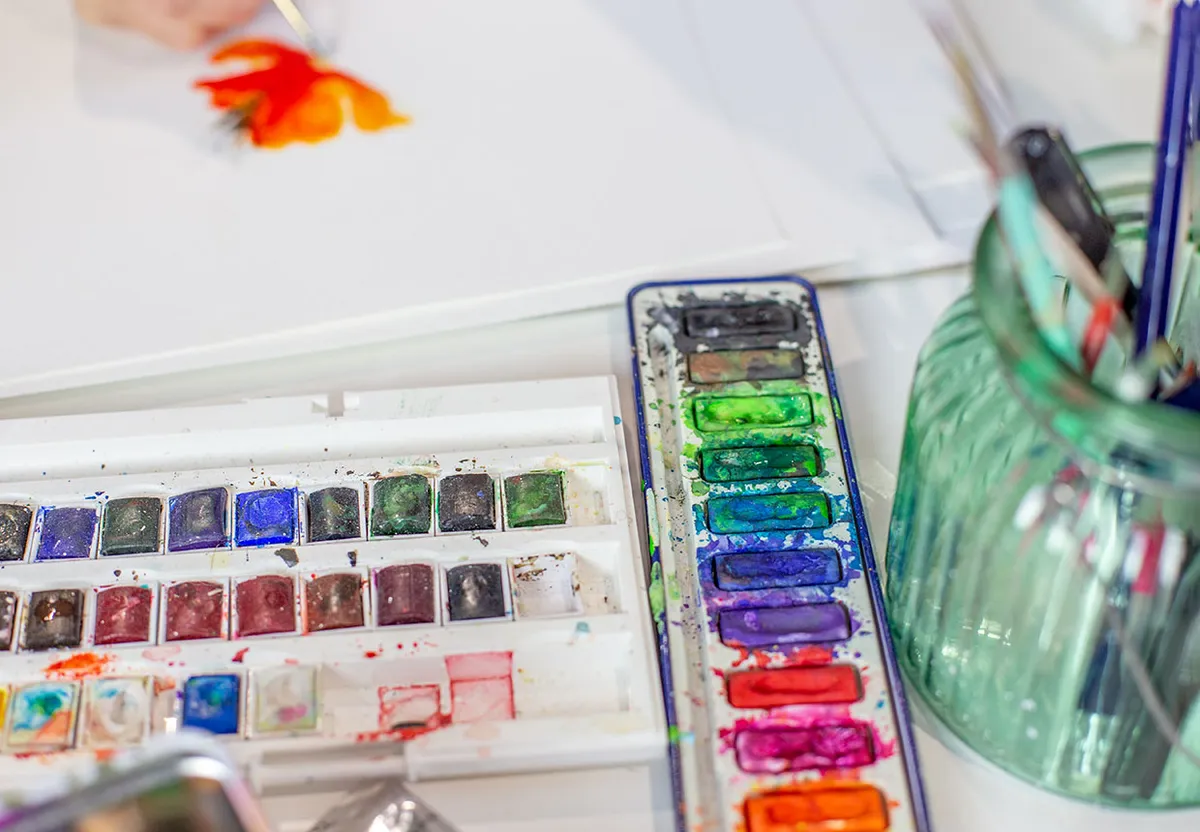
Watercolours have always been my medium of choice as they are brilliant for building layers of colour and achieving a beautiful variety of tones from soft pastels to bold brights.
Personally, I like using a combination of watercolour inks and solids; the inks are so vibrant and easy to work with and the pigmentation in the solids is excellent, great for a variety of painting methods.
It’s always best if possible to have fresh flowers in front of you so you can see the full stem and choose an angle you like most. My favourite flowers to paint are those I find in my own garden; wildflowers like poppies, roses and foxgloves (I chose poppies for this tutorial).
I always take photos on my phone so that when the flowering season has ended I can still refer back to something real.
Easy flower painting materials
Before you begin your easy flower painting, you'll need to stock up on some supplies. Here's what you'll need for this project…
Watercolour inks
Watercolour inks come in vibrant colours and contain all of the colours you need to create stunning flower paintings. These inks blend well with traditional watercolour paints too. Look out for brands such as Ecoline and Daler Rowney.
Watercolour set
If you want to get into watercolour painting, it's worth investing in a set of high-quality watercolour paints. Look for a set with pans so you can easily replace any of the colours if they run out. Good brands to buy include Winsor & Newton, Derwent and Faber Castell.
Watercolour paper
It’s important to use watercolour paper for this flower painting project. This paper is very thick and won’t bend or warp when wet. Watercolour paper absorbs the paint well and will help you to achieve a professional finish.
Whistlefish blank greetings cards
Giving someone a hand-painted card can really make their day! Make your own by using these handy blank greetings cards from Whistlefish.
Ready to have a go at painting poppies? Read on to learn how to paint a flower with Lyn’s easy guide.

